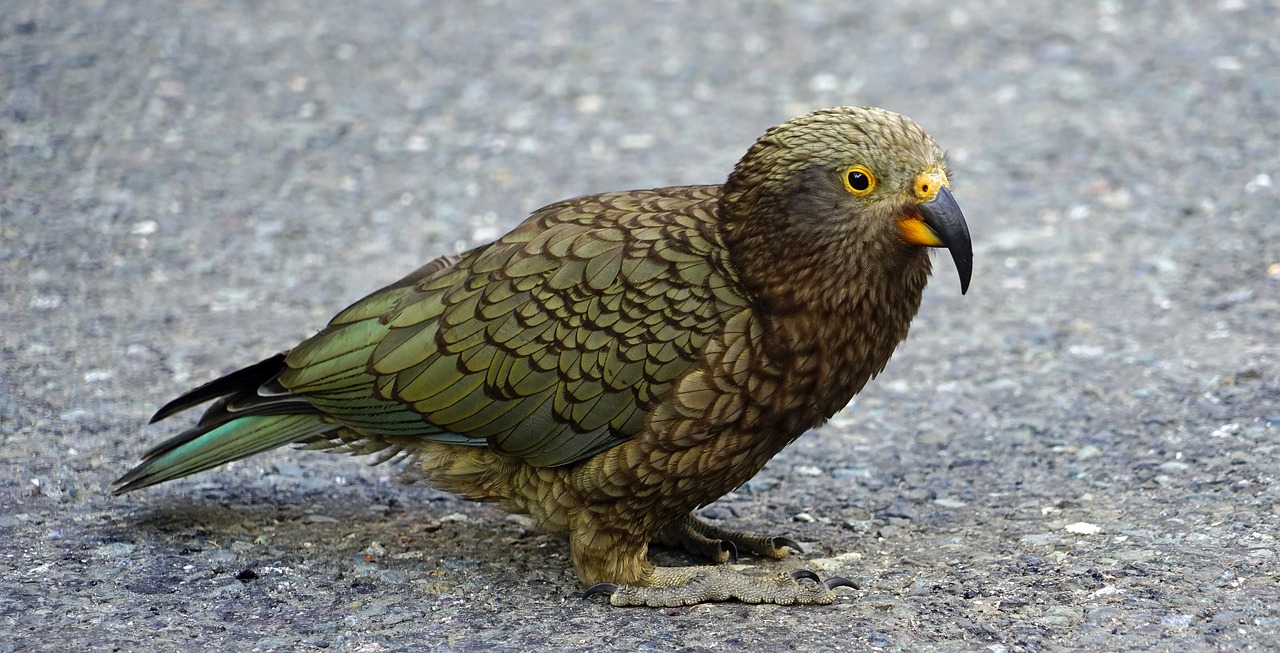 Evolution & Behaviour
Evolution & Behaviour
‘Laughing’ together: bridging avian-mammalian differences
How has never experienced some playful and contagious happy times? Well, Kea parrots do this on a regular base.

We like animals that we perceive as being similar to ourselves. It is not a coincidence that those animals that humans consider similar to them in terms of appearance, intelligence and/or sociality, also enjoy the highest levels of protection in modern societies (for example primates, dolphins and dogs). Interestingly, some "human" features that distinguish us, such as bipedalism and vocal learning, are widespread amongst birds. Nonetheless, birds have long been regarded as less similar to humans than mammals, and thus less relatable. In the past decades, research on bird cognition, mostly corvids (crows and ravens) and psittacines (parrots), has shown that these animals have strikingly similar capabilities to our mammalian cousins. This may come as a surprise, considering that the closest common ancestor of mammals and birds went extinct before the rise of the dinosaurs. The similarities between mammals and birds suggest that social and survival strategies, not phylogenetic relatedness, are key for the development of similar patterns of behaviour.
Kea parrots, like humans, play a lot. While play behaviour is common in the animal kingdom, especially amongst warm-blooded vertebrates, the fact that kea continue to play into adulthood is unusual. Furthermore, kea produce a loud, distinct play call, which most other animals do not produce. Loud play calls may be dangerous because they can alert predators to the location and activity of the playing animal. Kea do not face this problem, as they evolved with few predators in the Southern Alps of New Zealand. Having described the play call in a previous study, we became interested in what effect it has on other kea. The literature suggested that it could be similar to the "play bows" of dogs or the "play faces" of primates: an overt signal that allows others to distinguish play behaviour from other behaviours, like aggression. To test whether this was also the case for kea play calls, we needed to recreate the situation artificially. This was done by playing back recordings of the call to wild kea. To rule out factors that were shared between the play call and other calls / sounds, and thus not unique to this distinct vocalisation, we also played back several control sounds to the same birds.
We found a large increase in play behaviour in the kea that heard the play calls. This increase was clear compared to the pre- and post-experimental periods, as well as any period when the birds heard a control sound. Interestingly, many kea did not join ongoing bouts of play, but began to play spontaneously with other non-playing kea, or engaged in solitary play (locomotor or object play). Additionally, the play call did not cause the birds to look for the source of the call any more than an artificial pure tone. Taken together, this suggests that the kea were not invited to play or informed about play happening somewhere close by. Rather, hearing the play call increased their intrinsic motivation to play. This type of effect is called an "emotional contagion", because the caller's emotional state affects that of the listener. Playfulness is considered a positive emotional state, so the kea play call is an example of a "positive emotional contagion".
Although kea are the first bird species to display a positive emotional contagion, similar effects have been described in mammals. Both chimpanzees and rats have play vocalizations that act as positive emotional contagions by increasing playfulness in others. This phenomenon is also found in humans, in the social effects of laughter. Especially in small children, gleeful laughter during play has positive emotional contagion effects similar to those found in primates and rats; on this basis, one finds parallels between the play vocalizations of primates and rats, and the laughter of humans. Our findings suggest that the play call of the kea functions similarly. This further bridges the perceived gap between birds and mammals, including human beings. We hope that studies like this one will help spread the knowledge that birds and mammals are not so different from one another. If people are aware that birds can play and vocalize in a similar way to humans, this may lead to better treatment of these species in our modern world.
Original Article:
Schwing R, Nelson X, Wein A, Parsons S. Positive emotional contagion in a New Zealand parrot. Current Biology. 2017;27(6):R213-R214. doi:10.1016/j.cub.2017.02.020.Next read: Amoebas trap bacteria using nets of DNA: the same mechanism as human immune cells by Lukáš Novák
Edited by:
Massimo Caine , Founder and Director
We thought you might like
The lingering effects of parental care and its role in evolutionary change
Jan 27, 2016 in Evolution & Behaviour | 4 min read by Rebecca KilnerChimpanzees Trust Their Friends
Apr 14, 2016 in Evolution & Behaviour | 3.5 min read by Jan EngelmannLab-life: the afternoon siesta of the fruit fly
Jul 13, 2016 in Evolution & Behaviour | 3.5 min read by Edward GreenMore from Evolution & Behaviour
Cicada emergence alters forest food webs
Jan 31, 2025 in Evolution & Behaviour | 3.5 min read by Martha Weiss , John LillSize does not matter: direct estimations of mutation rates in baleen whales
Jan 29, 2025 in Evolution & Behaviour | 4 min read by Marcos Suárez-MenéndezThe Claws and the Spear: New Evidence of Neanderthal-Cave Lion Interactions
Jan 22, 2025 in Evolution & Behaviour | 3.5 min read by Gabriele RussoA deep-sea spa: the key to the pearl octopus’ success
Jan 20, 2025 in Evolution & Behaviour | 3.5 min read by Jim BarryFeisty fish and birds with attitude: Why does evolution not lead to identical individuals?
Aug 31, 2024 in Evolution & Behaviour | 3 min read by Lukas Eigentler , Klaus Reinhold , David KikuchiEditor's picks
Trending now
Popular topics


